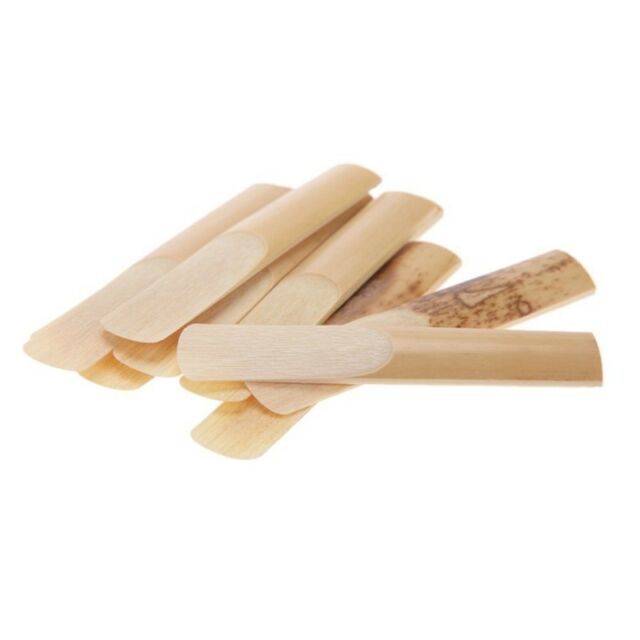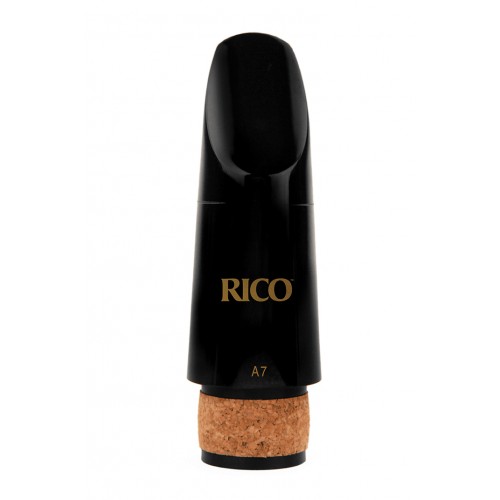- Introduction
- Why Play the Clarinet
- How to Play the Clarinet
- Which Clarinet Should I Choose?
- How to Choose the Right Clarinet Size for My Child
- How to Buy a Clarinet
- How Much Should a Clarinet Cost?
- Rent-to-Own or Lease-to-Own Clarinet Options
- Recommended Clarinet Accessories
- Clarinet Maintenance and Care
- Famous Clarinet Players
Introduction
The clarinet has an exciting and diverse background in the history of music. As one of the most versatile instruments in the woodwind family (which also includes flutes, oboes, bassoons, and saxophones), the clarinet has been the instrument of choice for many brilliant performers in many styles of music, including jazz, classical and pop.
A clarinet for a child is a terrific starting point into making music. The size and weight of the instrument make the clarinet well-suited for children with small hands and, compared to many instruments, the clarinet has the advantage of being very portable.
There are many opportunities for young players of the clarinet, primarily in school music programs, including concert and marching bands, orchestras, jazz bands, clarinet choirs, and solo clarinet with piano.
The clarinet is often the instrument to play the melody in band, so children get a lot of pleasure by playing recognizable tunes. The technique used to play the clarinet is also very similar to the saxophone and the flute, which is why many players are able to switch (or, as musicians say, “double” or “triple”) between these instruments. Often young players will learn on the clarinet first, and then add or switch to the saxophone or flute to broaden their musical experience and opportunities.
Why Play the Clarinet
How to Play the Clarinet
Below is a video series introducing the parts of the clarinet and how to get started.
How to Put on a Reed
How to Put the Clarinet Together
How to Apply Cork Grease
How to Hold the Clarinet
How to Blow the Clarinet
How to Tongue on the Clarinet
Which Clarinet Should I Choose?
The Orchestra Place requires all students to have an instrument from the teacher-approved brand list to ensure the best experience and sound for the student and the ensemble.
For beginners, we recommend the Jupiter JCL700N Student Bb Clarinet as the best clarinet for quality and affordability.
Jupiter JCL700N Student Bb Clarinet
The Jupiter JCL700N student clarinets are made from ABS resin in a matte finish with an appearance and sound similar to that of genuine granadilla wood. These student clarinets are lightweight, strong and easy to clean – perfect for even very young players.
This student clarinet has a nickel silver bell ring, .577″ bore, undercut tone holes, forged nickel plated nickel-silver keys, A442 tuning and comes with an injection molded French style case with draw bolt latches. The thumb rest is adjustable up or down to better fit hand size and finger length. A neck strap is also included with an adjustable attachment ring to lessen the weight on the player’s thumb while promoting the correct hand and finger positioning, embouchure and posture.
The offset trill keys, a traditional french configuration, help reduce excess moisture from accumulating and ensure the absolute highest performance standard. Nickel-plated silver keys offer a great feel and lasting beauty!
Back to topHow to Choose the Right Clarinet Size for My Child
When you want to buy or rent a student clarinet, you should be aware that there are several clarinets in the clarinet family. They range from the tiny E-flat clarinet, which is about 14 inches long, to the giant contrabass clarinet, which is taller than a seated adult. But the clarinet most often used in school band programs is the B-flat clarinet.
This is the most popular model, and is the same clarinet that is seen most often in solo performances and on television. Playing the larger clarinets is better left for older students who can handle the larger keys and weight of the instrument.
Back to topHow to Buy a Clarinet
After a young clarinet player has at least a year of experience, buying an instrument is often the best choice, both financially and in sense of ownership. Your student has demonstrated their commitment and is ready to maintain and practice on their very own instrument. Since purchasing a clarinet is a bigger investment than renting, it’s important to make sure you’ve carefully compared retailers’ inventory, prices, financing options, setup and equipment options prior to buying. If and when you are ready to commit and invest in purchasing a clarinet, keep in mind the following guidelines and tips.
There are two types of clarinets available for students, wood and plastic. Usually the plastic clarinets are less expensive, often by $200 or more. When you look at a wood clarinet, you can see the grain in the wood. The plastic clarinet is usually shiny, although there are some matte finish plastic clarinets available.
There are distinct advantages for each of these types of clarinets. Wood clarinets are generally made of African Grenadilla wood, and provide a warmer, more professional sound than plastic. Professionals exclusively use wood clarinets, but plastic is more durable and can take more abuse especially from young students. Since wood expands and contracts with temperature changes, it must not be left in cold or hot temperatures for too long, as the wood will try to contract or expand, but the metal key-work will not. This could cause the instrument to crack, and could render the instrument unplayable, or in need of serious repair.
Among the most important parts of the clarinet are the reed, mouthpiece and ligature setup. These are what actually produce the sound of the instrument, so they must be of good quality in order to make the instrument easily playable for the young student.
The reed is a thin strip of cane mounted on the mouthpiece that vibrates to generate the clarinet’s sound. It is shaped like a long rectangle with one thinly tapered end flaring out slightly in a rounded shape that matches the upper edge of the clarinet’s mouthpiece. This end is the playing end and the other is where the reed is held fast against the clarinet by the ligature.
Reeds are manufactured in five levels of rigidity ranging from soft to hard. Playing is easier with a soft clarinet reed but players generally graduate to harder reeds as their technique and ability progresses.
The mouthpiece is what the reed is attached to by the ligature. It is placed in the player’s mouth between the top teeth, and with the bottom lip folded over the bottom teeth. The reed is held in position by a ligature, which is usually a metal or plastic band with one or two screws to hold the reed tight against the mouthpiece.
Often, the mouthpiece that is supplied with a student instrument is of very basic quality. An upgraded mouthpiece is an excellent investment, as it will help the student play more easily. It is important to choose a mouthpiece that is suitable for young players, which your music dealer can recommend.
The clarinet case is also very important. The clarinet is a delicate instrument, and can easily be damaged, so look for a sturdy case with latches that will not come open. Most cases come with the purchase of a new instrument, but when buying a used clarinet, it may be necessary to replace an older case to protect your investment.
Back to topHow Much Should a Clarinet Cost?
A good-quality, brand-new student clarinet may be purchased for about $400. An intermediate instrument may cost about $700 and professional clarinets are generally $1,000 and up.
Back to topRent-to-Own or Lease-to-Own Clarinet Options
Installment plans are an excellent option if you’re ready to make the commitment of buying an instrument but can benefit from deferred payments. This way, you get the freedom to pay over time, with the ultimate reward of owning the instrument. If you choose a rent-to-own or lease-to-own option, however, it’s important to check the fine print to make sure there are no hidden fees, and you should investigate the cancellation policy as well. Never sign up for a plan that traps you into payments if your child loses interest in playing an instrument. Look also for retailers who offer affordable damage protection during the installment term.
Our instrument supplier, The Instrument Place, offers teacher-approved instruments and one of the best interest-free lease-to-own programs as part of their commitment to getting an instrument in the hands of every person who wishes to play, without it being a financial burden.
Back to topRecommended Clarinet Accessories
When buying a clarinet, look for a store that offers all the accessories your child will need in order to best use and maintain it. Along with your purchase, check that a protective carrying case, reed, cleaning cloth, cork grease, and name tag are included or can be added. Like with other woodwind instruments, the reed size needed will vary, so make sure to acquire the right one for your clarinet and always stow it in a case to dry.
If given the option to purchase a music stand, go for it! A music stand promotes proper playing posture, which helps to prevent back aches and hunching over.
The Instrument Place instrument outfits come equipped with everything needed to get started in class, plus a free music stand with every instrument purchase!
Back to topClarinet Maintenance and Care
Assembly
- Always consult your teacher if you are not sure how to put together your instrument.
- NEVER force the parts of your instrument together.
- Clarinets play the best when a moist reed is used. Get into the habit of soaking the thin end of the reed in your mouth while you are assembling your clarinet.
- When assembling the clarinet you may need to apply a small amount of cork grease on each of the corked joints.
- When properly used, cork grease should allow you to assemble your clarinet without using excessive force.
- Always make sure that you have extra reeds, cleaning swabs and cork grease.
Maintenance
- Every clarinet player should have a maintenance and care kit.
- Use cork grease as needed. Too little will cause the cork to crack.
- Do not leave the reed attached to the mouthpiece. This will shorten the life of the reed and cause it to collect germs.
- Wipe off your fingerprints from the keys after every use. A clean, non-treated cotton cloth will work the best.
- NEVER clean your clarinet with water.
- Clean out the moisture from your instrument with an absorbent cotton drop swab after every use.
- Clean the inside of all sections of the clarinet. Removing the moisture from your clarinet before putting it away each time will prolong the life of the pads.
- Always store your instrument in its case with the lid closed when not in use. This will lower the risk of damage.
- Do not put anything (including sheet music) inside the case with your instrument that does not belong. Closing the case with extra contents can cause damage to the delicate keys.
- Make sure that all the latches are securely closed before transporting your instrument.
- Do not leave your clarinet in the car or in direct sunlight. This could cause the instrument to crack.
Student clarinet prices can be considerable so take care of your instrument.
Back to topFamous Clarinet Players
Looking for more inspiration? Below are sound bites from famous clarinet players from all a range of music categories.
Famous classical clarinet players include Richard Stoltzman, Anton Stadler, Johann Simon Hermstedt, Julian Bliss, Heinrich and Carl Baermann, Jack Brymer, Charles Neidich, Deiter Klocker and Karl Leister.
Well known jazz clarinet players include Woody Herman, Artie Shaw and Benny Goodman and Bennie Maupin.
Back to top


